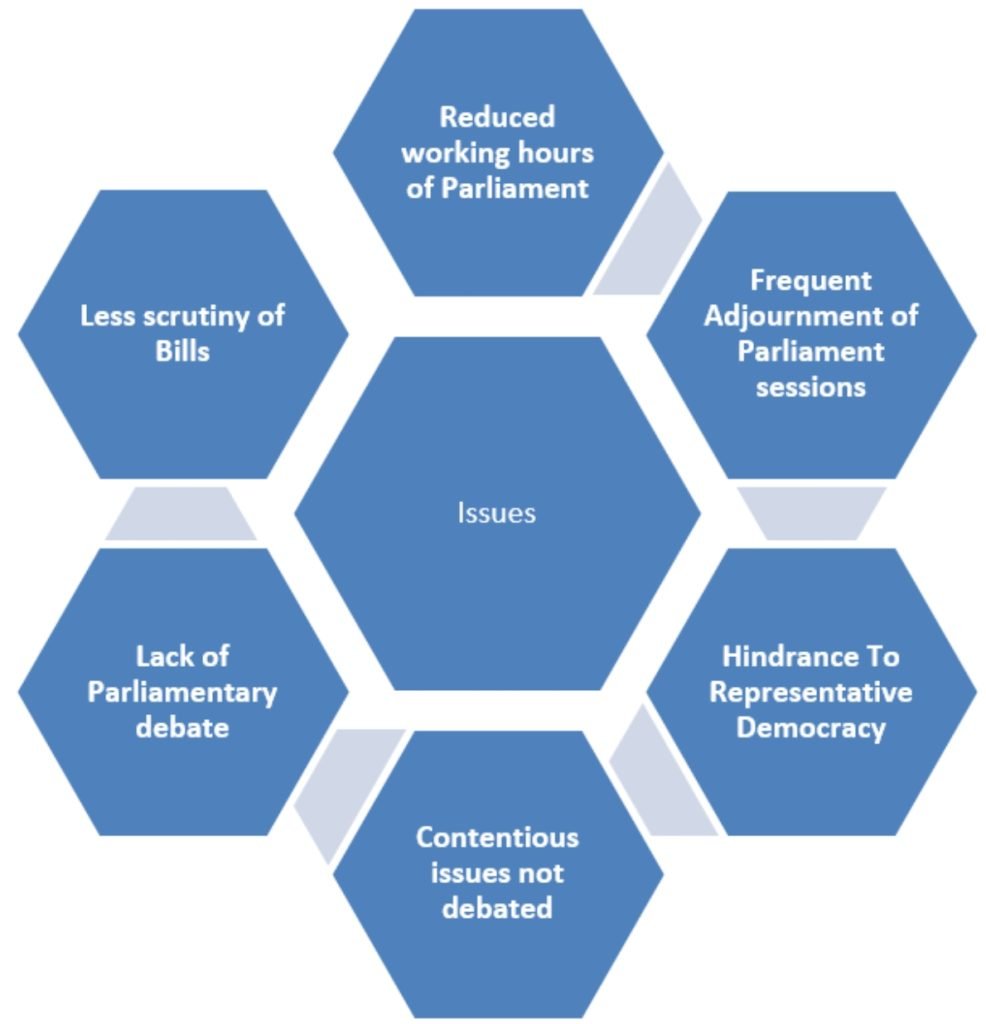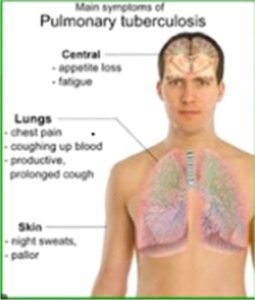Productivity in Parliament
The Hindu
GS 2: Polity
Context:
- The President said that Members of Parliament (MPs), whether they represent the ruling party or the Opposition, are defenders of the dignity of Parliament and one should not confuse competition to be rivalry.
About
- The President was speaking at a function to celebrate Constitution Day in the Central Hall of Parliament.
- It is expected that the Government and the Opposition, despite their differences, continue to work together in the best interests of the citizens.
- Our Constitution makers had envisioned this, and it is also necessary for nation-building.
- According to PRS Legislative Research records since 1999, the worst Session in terms of productivity for both Houses was the Winter Session of 2010.
- For Lok Sabha, the Winter Sessions of 2013 and 2016 were the second worst-hit in terms of productivity.
- For Rajya Sabha, the Budget Session of 2019 was the second-worst in terms of productivity: 7%.
- The Budget Session of 2018 witnessed productivity of 21% in Lok Sabha. The second part of the Session was completely paralysed.
- The productivity of the Rajya Sabha and the Lok Sabha during the monsoon session 2021 stood at 28% and 22% respectively.

Pulmonary Tuberculosis (TB)
Down to Earth
GS 2: Health
Context:
- According to a new study published in The Lancet, India has the highest population with household exposure to pulmonary tuberculosis (TB).

Highlights:
- An estimated 38 million people live in households across 20 high-burden countries where at least one person has pulmonary TB.
- This includes India.
- India accounted for 30% of the total figure, with 11.4 million people facing household exposure to TB.
- It was followed by Pakistan (5.2 million), Indonesia (2.7 million), Nigeria (2.5 million) and the Philippines (2.2 million).
- Demographic estimates: An estimated 1.11 million children aged 0-4; 2.28 million children aged 5-14; 5.94 million people aged 15-49; and 2.02 million people above 50 years in India face household exposure to infectious disease.
- States with the highest TB notifications: In 2020, Uttar Pradesh had the highest share of tuberculosis notifications in India with over 20%.
- Maharashtra and Madhya Pradesh followed with relatively lower notification rates with eight and seven per cent, respectively.
River Cities Alliance
PIB
GS 2: Government policies and interventions
Context:
- Recently, the Union Minister for Jal Shakti launched the River Cities Alliance.
About:
- It is a dedicated platform for river cities in India to ideate, discuss and exchange information for the sustainable management of urban rivers.
- This first of its kind of Alliance in the world symbolizes the successful partnership of the two Ministries i.e.
- Ministry of Jal Shakti and Ministry of Housing and Urban Affairs.
- The Alliance will focus on three broad themes- Networking, Capacity Building and Technical Support.
- This first of its kind of Alliance in the world symbolizes the successful partnership of the two Ministries i.e.
- In 2019, During the meeting of the National Ganga Council, the Prime Minister of India highlighted the need for a new river centric thinking in planning for cities on the banks of rivers.
- Subsequently, the National Mission for Clean Ganga (NMCG) and National Institute for Urban Affairs (NIUA) have collaborated together to launch the River Cities Alliance (RCA).
- It will be set up at the National Institute for Urban Affairs (NIUA), with NMCG’s support.
- Participating cities: Dehradun, Haridwar, Rishikesh, Srinagar, Begusarai, Bhagalpur, Munger, Patna, Berhampore, Hooghly-Chinsurah, Howrah, Jangipur, Maheshtala, Rajmahal, Sahibganj, Ayodhya, Bijnor, Farrukhabad, Kanpur, Mathura-Vrindavan, Mirzapur, Prayagraj, Varanasi, Aurangabad, Chennai, Bhubaneswar, Hyderabad, Pune, Udaipur and Vijayawada.
- Objectives :
- To provide the member cities with a platform to discuss and exchange information on aspects that are vital for sustainable management of urban rivers like minimizing their water footprint, reducing impacts on river and water bodies, capitalizing on natural, intangible, architectural heritage and associated services and develop self-sufficient, self-sustainable water resources through recycling, reuse strategy.
- The Alliance cities will work towards adopting and localizing national policies and instruments with key river-related directions, prepare their Urban River Management Plans and develop city-specific sectoral strategies that are required for sustainable urban river management.
- The Alliance gives opportunities to these cities to strengthen governance aspects for river cities and improves their liveability to attract external economic investments, access state of the art knowledge and frameworks as well as an opportunity to serve as the site for unique demonstration projects which will be implemented by NIUA and NMCG.

